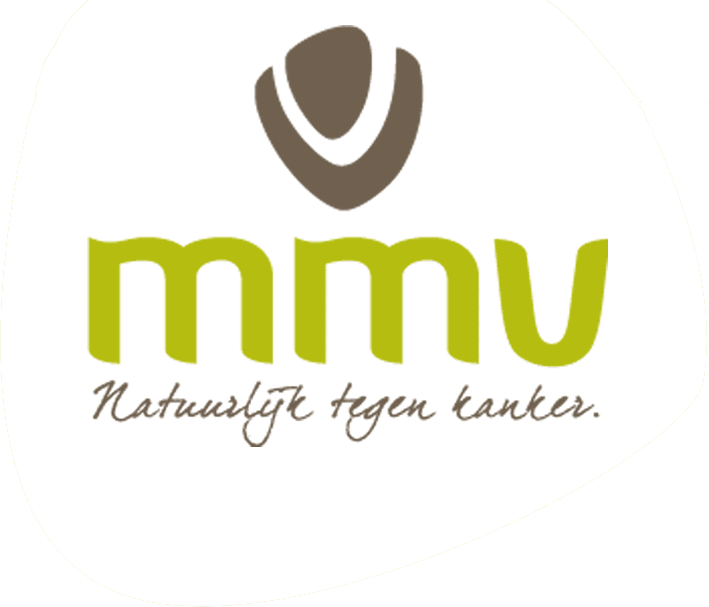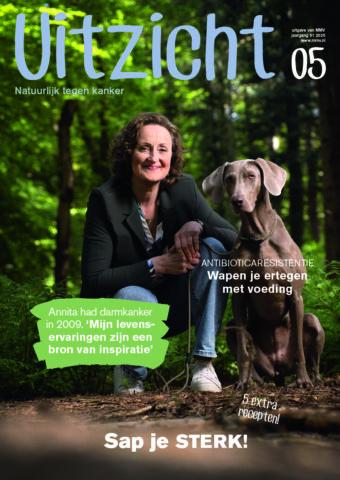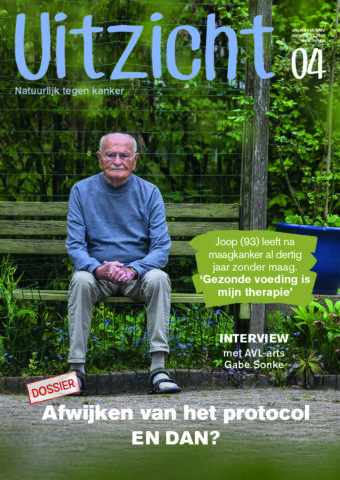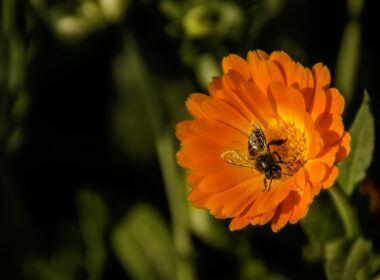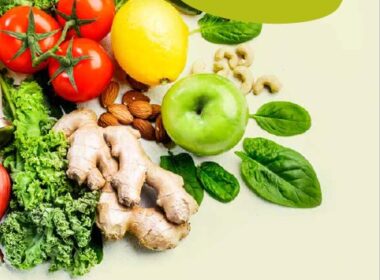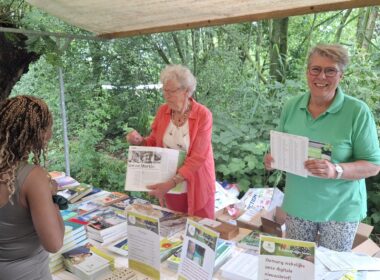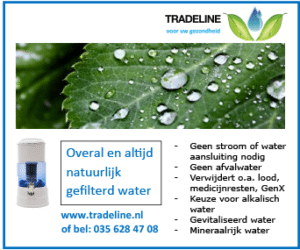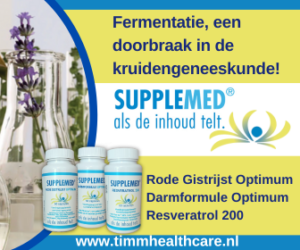De lawine van besmettingen door het coronavirus is afgezwakt. Is het tijdelijk, te danken aan social distancing of zijn er ook andere factoren in het spel?
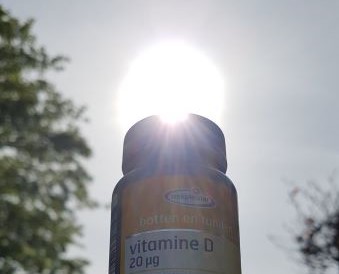
Voor de seizoensinvloed van virale luchtweginfecties (1-4) zijn verschillende hypotheses. Mensen komen in de winter dichter bij elkaar, reizen tijdens de wintervakantie en onze slijmvliezen drogen sneller uit. In de koudste periode van het jaar blijven droge deeltjes bovendien langer rondzweven, zijn virussen langer besmettelijk en is er een lager niveau van virus-dodende ultraviolette zonnestralen (5,6). Opvallend is dat de sterfte aan COVID-19 van januari t/m maart 2020 vooral hoog was in landen boven de 30-35ste Noordelijke breedtegraad (vanaf Iran omhoog) (2,7). In deze periode van het jaar staat in die regio de zon te laag voor lichaamseigen productie van vitamine D. Dat is terug te zien in de laagste vitamine D-spiegels (8-11).
Data uit 20 Europese landen, tonen een hoger percentage geregistreerde COVID-19 patiënten en doden in landen met een gemiddeld lagere vitamine D-status (12). Uitzonderingen worden waarschijnlijk veroorzaakt door suppletie met vitamine D, huidskleur, bedekking van de huid en leefstijl (2).
In Zwitserland hadden positief geteste COVID-19 patiënten lagere vitamine D-spiegels dan negatief geteste (13). En in de Filipijnen (14) en Indonesië (15) nam de ernst van COVID-19 toe naarmate de vitamine D-status lager was. Samenvoeging van alle onderzoeken met vitamine D-supplementen toont aan dat suppletie ongevaarlijk is en beschermt tegen acute luchtweginfecties, vooral bij een vitamine D-tekort (16,17).
Bij de verspreiding van het virus spelen nog andere factoren mee. Zoals het gegeven dat in de gebieden boven de 30-35ste Noordelijke breedtegraad ook de meeste mensen wonen. Bovendien zijn temperatuur en vochtigheidsgraad in de winter per definitie gunstig voor een virus om buiten het lichaam te overleven (18). Maar dit is geen antwoord op de vraag waarom zoveel mensen aan COVID-19 sterven. En waarom juist vooral de ouderen en mensen met overgewicht (19). Ook hier lijkt een link met vitamine D. Ouderen hebben namelijk vaak de laagste vitamine D-status of zelfs een vitamine D gebrek (20). Dat blijkt ook het geval in het zwaar getroffen (Noord-)Italië (21-23). Ook een feit is dat de vitamine D-status van mensen met overgewicht lager is dan die van mensen met een lager gewicht (24).
Data uit 20 landen: hoe lager de vitamine D-status, hoe meer COVID-19 patiënten en doden
Vitamine D is vooral bekend vanwege zijn functie in het calcium/fosfaat metabolisme. Het zorgt ervoor dat calcium uit de voeding in onze botten terecht komt. Echter, dat doet het veelzijdige takenpakket van deze vitamine tekort (25-29). Zo heeft vitamine D ook een belangrijke functie in het immuunsysteem. Het verhoogt onze afweer tegen micro-organismen en zorgt ervoor dat de immuunreactie niet uit de hand loopt (9,18,30-33). Een tekort veroorzaakt een sterkere immuunreactie (28) en is daarmee waarschijnlijk betrokken bij de cytokinenstorm (34), waaraan vele COVID-19 patiënten overlijden (35-38).
In Nederland krijgen vrouwen van 50-70 jaar het advies om dagelijks 10 µg vitamine D te nemen. Voor iedereen boven de 70 jaar is dit 20 µg (39,40). Deze aanbeveling is louter gebaseerd op de invloed op het calcium/fosfaat metabolisme (39,40). Op basis van COVID-19 gegevens (12,14,15) lijkt een vitamine D-status vanaf 80 nmol/L het best: tachtig was en is nog steeds prachtig (41,42). Sommigen adviseren zelfs 100-150 nmol/L (18). De huidige Nederlandse aanbevelingen zijn voor het bereiken van bovengenoemde spiegels ontoereikend (41,42). Een dagelijkse dosis van 1.000-2.000 IU (25-50 µg) is in de winter minimaal vereist (18,43). Geadviseerd wordt om als volwassene niet boven de 4.000 IU (100 µg)/dag te gaan (2,39,40). Waar wachten we eigenlijk op?
Deze column is gepubliceerd in Uitzicht nr. 5 van 2020.
MMV maakt wekelijks een selectie uit het nieuws over voeding en leefstijl in relatie tot kanker en andere medische condities.
Inschrijven nieuwsbrief
Referenties
-
- Gaunt ER, Hardie A, Claas EC, Simmonds P, Templeton KE. Epidemiology and clinical presentations of the four human coronaviruses 229E, HKU1, NL63, and OC43 detected over 3 years using a novel multiplex real-time PCR method. J Clin Microbiol. 2010;48(8):2940‐2947.
- Davies G, Garami AR, Byers JC. Evidence Supports a Causal Model for Vitamin D in COVID-19 Outcomes. medRxiv 6 May 2020. https://www.medrxiv.org/content/10.1101/2020.05.01.20087965v1
-
- Davies G, Garami AR, Byers JC. Evidence Supports a Causal Model for Vitamin D in COVID-19 Outcomes. medRxiv 6 May 2020. https://www.medrxiv.org/content/10.1101/2020.05.01.20087965v1
- WHO. Influenza season 2019–2020: early situation assessment. 18 December 2019.
-
- RIVM. Flu and flu jab.
-
- Wikipedia. Influenza. Seasonal variation.
-
6. Sunlight and humidity kill coronavirus the fastest: US scientists. Aljazeera 24 April 2020.
-
- Rhodes JM, Subramanian S, Laird E, Kenny RA. Editorial: low population mortality from COVID-19 in countries south of latitude 35 degrees North supports vitamin D as a factor determining severity [published online ahead of print, 2020 Apr 20]. Aliment Pharmacol Ther. 2020;10.1111/apt.15777.
-
- Moan J, Dahlback A, Ma L, Juzeniene A. Influenza, solar radiation and vitamin D. Dermatoendocrinol. 2009;1(6):307‐309. doi:10.4161/derm.1.6.11357
https://pubmed.ncbi.nlm.nih.gov/21572876/?from_term=Moan+Dermato-endocrinology+2009&from_pos=1
-
- He CS, Aw Yong XH, Walsh NP, Gleeson M. Is there an optimal vitamin D status for immunity in athletes and military personnel?. Exerc Immunol Rev. 2016;22:42‐64.
https://pubmed.ncbi.nlm.nih.gov/26853300/?from_term=He+Exercise+immunology+review+2016&from_pos=2
-
- Cannell JJ, Vieth R, Umhau JC, et al. Epidemic influenza and vitamin D. Epidemiol Infect. 2006;134(6):1129‐1140. doi:10.1017/S0950268806007175
https://pubmed.ncbi.nlm.nih.gov/16959053/?from_term=Cannell+2006&from_pos=1
-
- van Grootheest G, Milaneschi Y, Lips PT, Heijboer AC, Smit JH, Penninx BW. Determinants of plasma 25-hydroxyvitamin D levels in healthy adults in the Netherlands. Neth J Med. 2014;72(10):533‐540.
-
- Ilie PC, Stefanescu S, Smith L. The role of vitamin D in the prevention of coronavirus disease 2019 infection and mortality [published online ahead of print, 2020 May 6]. Aging Clin Exp Res. 2020;1‐4. doi:10.1007/s40520-020-01570-8
-
- D’Avolio A, Avataneo V, Manca A, Cusato J, De Nicolò A, Lucchini R, Keller F, Cantù M. 25-Hydroxyvitamin D Concentrations Are Lower in Patients with Positive PCR for SARS-CoV-2. Nutrients 2020, 12(5), 1359; https://doi.org/10.3390/nu12051359
file:///C:/Users/Eigenaar/Downloads/nutrients-12-01359%20(1).pdf
-
- Alipio M. Vitamin D Supplementation Could Possibly Improve Clinical Outcomes of Patients Infected with Coronavirus-2019 (COVID-19). April 9, 2020
-
- Raharusuna P, Priambada S, Budiarti C, Agung E, Budi C. Patterns of COVID-19 Mortality and Vitamin D: An Indonesian Study.
Toevoeging op 21.12.'20: Het is gebleken dat referentie nummer 15 gebaseerd is op fraude. Het fraudegeval is beschreven in: Henrina J, Lim MA, Pranata R. COVID-19 and misinformation: how an infodemic fuelled the prominence of vitamin D. Br J Nutr. 2020 Jul 27:1-2. doi: 10.1017/S0007114520002950. Epub ahead of print. PMID: 32713358; PMCID: PMC7443564 (https://pubmed.ncbi.nlm.nih.gov/32713358/). Het artikel over het gefraudeerde onderzoek was ten tijde van deze toevoeging helaas nog steeds online te vinden.
-
- Martineau AR, Jolliffe DA, Hooper RL, et al. Vitamin D supplementation to prevent acute respiratory tract infections: systematic review and meta-analysis of individual participant data. BMJ. 2017;356:i6583. Published 2017 Feb 15. doi:10.1136/bmj.i6583
https://pubmed.ncbi.nlm.nih.gov/28202713/?from_term=Martineau+BMJ+2017&from_pos=1
-
- Gruber-Bzura BM. Vitamin D and Influenza-Prevention or Therapy?. Int J Mol Sci. 2018;19(8):2419. Published 2018 Aug 16. doi:10.3390/ijms19082419
-
- Grant WB, Lahore H, McDonnell SL, et al. Evidence that Vitamin D Supplementation Could Reduce Risk of Influenza and COVID-19 Infections and Deaths. Nutrients. 2020;12(4):E988. Published 2020 Apr 2. doi:10.3390/nu12040988https://pubmed.ncbi.nlm.nih.gov/32252338/
-
- Docherty AB, Harrison EM, Green CA, Hardwick H, Pius R, Norman L, Holden KA, Read JM, Dondelinger F, Carson G, Merson L, Lee J, Plotkin D, Sigfrid L, Halpin S, Jackson C, Gamble C, Horby PW, Nguyen-Van-Tam JS, ISARIC4C Investigators, Dunning J, Openshaw PJM, Baillie JK, Semple MG. Features of 16,749 hospitalised UK patients with COVID-19 using the ISARIC WHO Clinical Characterisation Protocol. medRxiv April 28, 2020
https://www.medrxiv.org/content/10.1101/2020.04.23.20076042v1.full.pdf
-
- Boucher BJ. The problems of vitamin d insufficiency in older people. Aging Dis. 2012;3(4):313‐329
-
- Lippi G, Nouvenne A, Ticinesi A, et al. The burden of vitamin D deficiency in a mediterranean country without a policy of food fortification. Acta Biomed. 2015;86(1):59‐62. Published 2015 Apr 27
https://pubmed.ncbi.nlm.nih.gov/25948029/?from_term=Lippi%2C+Acta+Giomed+2015&from_pos=9
- 22. Isaia G, Giorgino R, Rini GB, Bevilacqua M, Maugeri D, Adami S. Prevalence of hypovitaminosis D in elderly women in Italy: clinical consequences and risk factors. Osteoporos Int. 2003;14(7):577‐582. doi:10.1007/s00198-003-1390-7 https://pubmed.ncbi.nlm.nih.gov/12856111/?from_single_result=Isaia+G%2C+Giorgino+R%2C+Rini+GB&expanded_search_query=Isaia+G%2C+Giorgino+R%2C+Rini+GB
-
- Lips P, Cashman KD, Lamberg-Allardt C, et al. Current vitamin D status in European and Middle East countries and strategies to prevent vitamin D deficiency: a position statement of the European Calcified Tissue Society. Eur J Endocrinol. 2019;180(4):P23‐P54. doi:10.1530/EJE-18-0736
-
- Snijder MB, van Dam RM, Visser M, et al. Adiposity in relation to vitamin D status and parathyroid hormone levels: a population-based study in older men and women. J Clin Endocrinol Metab. 2005;90(7):4119‐4123. doi:10.1210/jc.2005-0216
-
- Zittermann A. Vitamin D in preventive medicine: are we ignoring the evidence?. Br J Nutr. 2003;89(5):552‐572. doi:10.1079/BJN2003837
-
- Hossein-nezhad A, Spira A, Holick MF. Influence of vitamin D status and vitamin D3 supplementation on genome wide expression of white blood cells: a randomized double-blind clinical trial. PLoS One. 2013;8(3):e58725. doi:10.1371/journal.pone.0058725
-
- Koivisto O, Hanel A, Carlberg C. Key Vitamin D Target Genes with Functions in the Immune System. Nutrients. 2020;12(4):E1140. Published 2020 Apr 19. doi:10.3390/nu12041140
https://pubmed.ncbi.nlm.nih.gov/32325790/?from_term=Koivisto+Nutrients+2020&from_pos=1
-
- Tuohimaa P. Vitamin D and aging. J Steroid Biochem Mol Biol. 2009;114(1-2):78‐84. doi:10.1016/j.jsbmb.2008.12.020
-
- Feldman D, Krishnan AV, Swami S, Giovannucci E, Feldman BJ. The role of vitamin D in reducing cancer risk and progression. Nat Rev Cancer. 2014;14(5):342‐357. doi:10.1038/nrc3691
-
- Hewison M. Vitamin D and the immune system: new perspectives on an old theme. Endocrinol Metab Clin North Am. 2010;39(2):365‐379. doi:10.1016/j.ecl.2010.02.010
https://pubmed.ncbi.nlm.nih.gov/20511058/?from_term=Hewison%2C+Endocrinol+Metab+Clin+2010&from_pos=2
-
- Iruretagoyena M, Hirigoyen D, Naves R, Burgos PI. Immune Response Modulation by Vitamin D: Role in Systemic Lupus Erythematosus. Front Immunol. 2015;6:513. Published 2015 Oct 12. doi:10.3389/fimmu.2015.00513
https://pubmed.ncbi.nlm.nih.gov/26528285/?from_term=Iruretagoyena+Front.+Immunol.+2015&from_pos=1
- Hewison M. Antibacterial effects of vitamin D [published correction appears in Nat Rev Endocrinol. 2011 Aug;7(8):436]. Nat Rev Endocrinol. 2011;7(6):337‐345. doi:10.10 https://pubmed.ncbi.nlm.nih.gov/21263449/?from_single_result=Hewison%2C+M.+Nat.+Rev.+Endocrinol.+2011&expanded_search_query=Hewison%2C+M.+Nat.+Rev.+Endocrinol.+201138/nrendo.2010.226
-
- Jiménez-Sousa MÁ, Martínez I, Medrano LM, Fernández-Rodríguez A, Resino S. Vitamin D in Human Immunodeficiency Virus Infection: Influence on Immunity and Disease. Front Immunol. 2018;9:458. Published 2018 Mar 12. doi:10.3389/fimmu.2018.00458
-
- Daneshkhah A, Agrawal V, Eshein A, Subramanian H, Roy HK, Backman V. The Possible Role of Vitamin D in Suppressing Cytokine Storm and Associated Mortality in COVID-19 Patients. medRxiv April 30, 2020
https://www.medrxiv.org/content/10.1101/2020.04.08.20058578v3.full.pdf
-
- Channappanavar R, Perlman S. Pathogenic human coronavirus infections: causes and consequences of cytokine storm and immunopathology. Semin Immunopathol. 2017;39(5):529‐539. doi:10.1007/s00281-017-0629-x
- Pedersen SF, Ho YC. SARS-CoV-2: a storm is raging. J Clin Invest. 2020;130(5):2202‐2205. doi:10.1172/JCI137647 https://pubmed.ncbi.nlm.nih.gov/32217834/?from_single_result=Pedersen+J+Clin+Invest+2020&expanded_search_query=Pedersen+J+Clin+Invest+2020
-
- Ye Q, Wang B, Mao J. The pathogenesis and treatment of the `Cytokine Storm' in COVID-19 [published online ahead of print, 2020 Apr 10]. J Infect. 2020;S0163-4453(20)30165-1. doi:10.1016/j.jinf.2020.03.037
-
- Mehta P, McAuley DF, Brown M, et al. COVID-19: consider cytokine storm syndromes and immunosuppression. Lancet. 2020;395(10229):1033‐1034. doi:10.1016/S0140-6736(20)30628-0
https://pubmed.ncbi.nlm.nih.gov/32192578/?from_term=Mehta+Lancet+2020&from_pos=1
-
- Gezondheidsraad. Evaluatie van de voedingsnormen voor vitamine D. Den Haag: Gezondheidsraad, 2012; publicatienr. 2012/15. ISBN: 978-90-5549-931-1.
-
- Voedingscentrum. Voedingsnormen en suppletieadviezen vitamine D. Oktober 2012.
-
- Muskiet FAJ, Schuitemaker GE, Van der Veer E, Wielders JPM. Is het vitamine-D-advies van de Gezondheidsraad toereikend? Ned Tijdschr Klin Chem Labgeneesk 2009; 34: 197-198
https://www.nvkc.nl/sites/default/files/NTKC/2009-3-p197-198.pdf
-
- Muskiet FAJ, Schuitemaker GE, Van der Veer E, Wielders JPM. Een kritische beschouwing van de aanbevelingen en de rationale van het Gezondheidsraad rapport ‘Evaluatie van de voedingsnormen voor vitamine D. Ned Tijdschr Klin Chem Labgeneesk 2013; 38: 169-185
https://www.nvkc.nl/sites/default/files/NTKC/2013_169186.pdf
- Boucher BJ. The problems of vitamin d insufficiency in older people. Aging Dis. 2012;3(4):313‐329. https://pubmed.ncbi.nlm.nih.gov/23185713/?from_single_result=Boucher+Aging+and+Disease+2012&expanded_search_query=Boucher+Aging+and+Disease+2012
